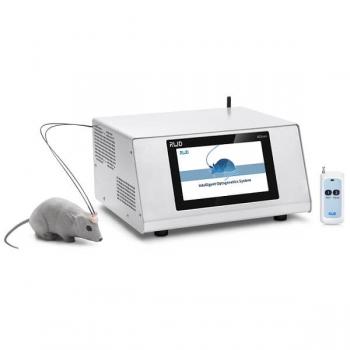/ Catalog / Optogenetics / RWD IOS-465
IOS-465 Intelligent Optogenetics System
The intelligent optogenetic system RWD IOS-465 enables optogenetic experiments with less human intervention.
- Overview
- Specifications
- Links
Based on the previous generation of integrated machines (a laser and waveform generator combined into one), RWD's new intelligent optogenetics system IOS-465 has made another advancement. To accommodate various experimental needs, the new system has three signal triggering options, one-click test conversion, and remote control functionality. By using this tool, one may lessen the interference of human variables in experiments involving animal behavior, and the special test program and output view feature of the experiment record make managing the experiment easier.
Optogenetics uses proteins that respond to light to regulate biological functions. By using genetic techniques to express light-sensitive channel proteins in particular cell populations, these light-sensitive channel proteins will open under particular light wavelengths to pump protons out of the cell or anions (like Cl-) and cations (like Na + and K +) into the cell to hyperpolarize or depolarize the cell, respectively, allowing the cell to be instantly inhibited or excited. Optogenetics is a potent method for researching complex biological systems and the brain due to its unmatched spatiotemporal precision, high tunability, reversibility, and minimal side effects. For these reasons, optogenetics is poised to revolutionize cellular metabolism, much as it has already done for fields like neuroscience, developmental biology, and cell signaling. Common research topics include those listed below, along with others, such as fundamental research on neural circuits, learning and memory, addiction, dyskinesia, sleep disorders, Parkinson's disease models, depression and anxiety animal models, and other applications.
Features & Benefits
High Stability
During the experiment, make sure that the regulation effect is constant.
Remote Control
Avoid including more human influences in animal behavioral investigations.
Fast Response
Lessen the latency between animal behavior and optogenetic control.
Multiple Trigger Modes
Satisfy a variety of experimental demands, including those for electrophysiology, fiber photometry, etc.
You can also visit site of the manufacturer.


